Before planting onions, there are several things you need to know. First, you must choose the variety that coincides with the amount of daylight hours you receive in your region.
Long day, short day and intermediate day onions refer to three categories of onion varieties distinguished by their response to day length:
Long Day Onions:
- Long day onions require 14-16 hours of daylight for bulb formation. They typically grow best in northern regions where summer days are longer.
- They are often grown in regions above 35° latitude in the United States, such as the Northern states and the Pacific Northwest.
- Examples of long day onion varieties include ‘Walla Walla’, ‘Yellow Sweet Spanish’, and ‘Copra’.
Intermediate-Day Onions:
- Intermediate-Day onions require 12–14 hours of daylight for bulb formation. They are suitable for regions with moderate day lengths and temperatures, typically found in central states and some parts of the coastal regions.
- Intermediate day onions are commonly grown in states like California, Oregon, Idaho, Colorado, and parts of the Midwest.
- Examples of intermediate day onion varieties include ‘Red Candy Apple’, ‘Big Daddy’, and ‘Cabernet’.
Short Day Onions:
- Short day onions require 10-12 hours of daylight for bulb formation. They are suited for regions with milder winters and shorter daylight hours.
- Short day onions are commonly grown in the Southern United States, below 35° latitude.
- They are well-suited for states like Texas, Florida, and Southern California.
- Examples of short day onion varieties include ‘Texas Early Grano’, ‘Red Creole’, and ‘Granex’ (the variety used to make Vidalia onions).
Choosing the right type of onion for your region depends on your local climate and the length of daylight hours during the growing season.
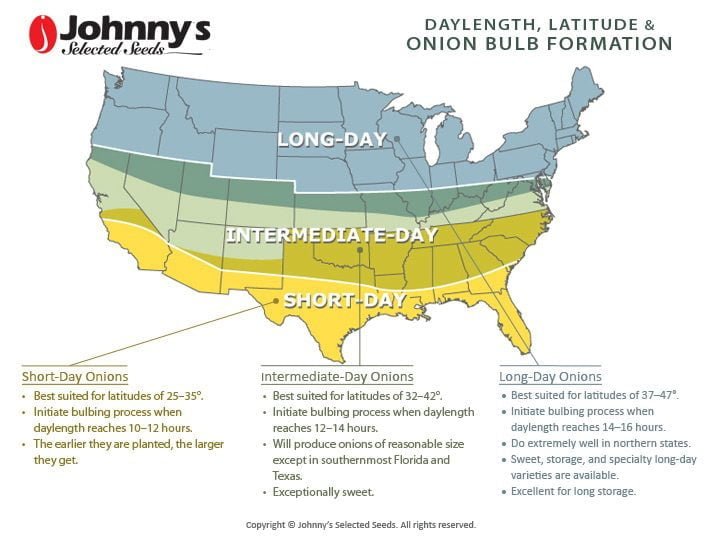
I found a great map on Johnny’s Seeds that perfectly illustrates the various regions. Let me know if you see your area on the map.
Starting Onion Plants:
- From Seeds: Start seeds indoors 6-8 weeks before the last frost date. Sow seeds thinly in trays or pots filled with seed starting mix, covering lightly with soil. Keep the soil moist and provide adequate light until seedlings emerge.
- From Sets: Onion sets are small, dormant bulbs. Plant sets directly in the garden in early spring, about 1 inch deep and 4-6 inches apart.
- From Transplants: Purchase or grow onion transplants to plant in the garden. Transplants are typically started from seeds and then grown into small plants before transplanting outdoors.
Companion Plants:
Plant onions near carrots, lettuce, tomatoes, and peppers. These companion plants can help repel pests and improve overall growth.
Avoid Planting Near Onions:
Avoid planting onions near beans and peas, as they can inhibit each other’s growth. Onions may also stunt the growth of beets and asparagus.
Optimal Conditions:
- Temperature: Onions prefer cooler temperatures, around 55-75°F (13-24°C) for optimal growth.
- pH: Aim for a soil pH of 6.0-7.5 for best results.
- Soil: Well-draining, fertile soil with plenty of organic matter is ideal for onions. Avoid compacted or waterlogged soil.
- Fertilizer: Side dress with nitrogen-rich fertilizer when the plants are about 4-6 inches tall, and again when they start forming bulbs.
- Sunlight: Onions require full sun.
- Water: Keep the soil consistently moist but not waterlogged. Water deeply once or twice a week, depending on weather conditions.
Maintenance:
You can trim the green tops of onions periodically for culinary use without harming the bulb development.
Pest Control:
Onions can help repel pests such as aphids, carrot flies, and cabbage worms from nearby crops due to their strong odor.
Growing Time:
Onions typically take 3-4 months to reach maturity, depending on the variety and growing conditions.
Harvesting:
Onions are ready to harvest when the tops turn yellow and start to fall over. Carefully lift the bulbs from the soil and allow them to cure in a warm, dry location for 1-2 weeks before storing.



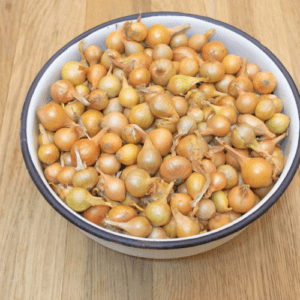

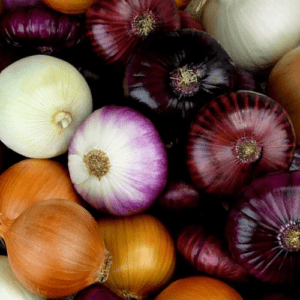



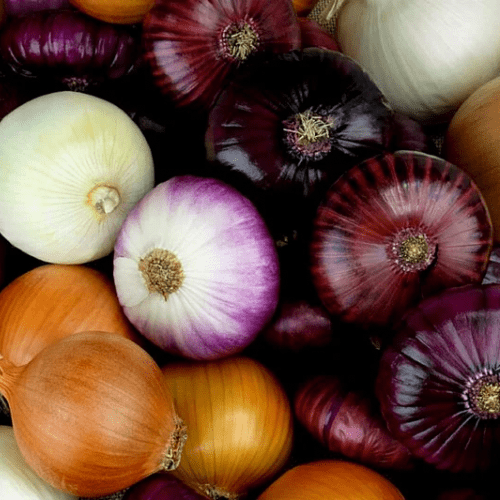
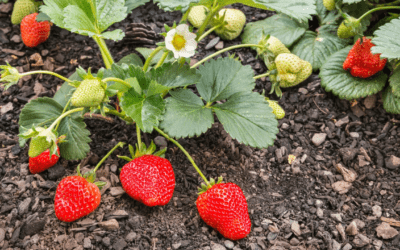
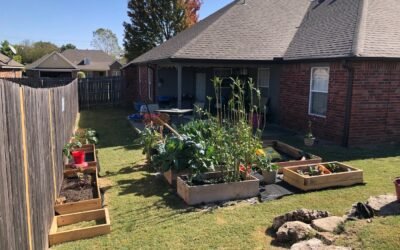
0 Comments